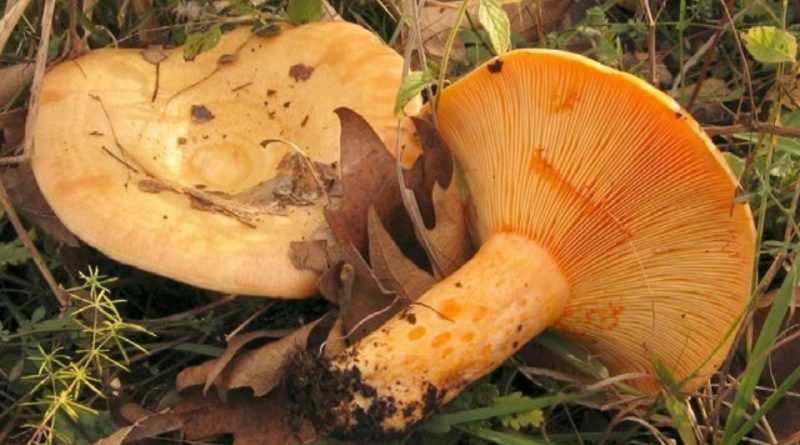Lactarius salmonicolor
Lactarius salmonicolor
The Lactarius salmonicolor (Lactarius salmonicolor Heim & Leclair) is a basidiomycete mushroom belonging to the genus Lactarius.
Systematic –
This fungus from the systematic point of view belongs to the Domain Eukaryota, Kingdom Fungi, Basidiomycota Division, Class Basidiomycetes, Order Russulales, Family Russulaceae and therefore to the genus Lactarius and to the species L. salmon color.
Etymology –
The term Lactarius comes from lac, láctis milk: which refers to milk, due to the typical latex emission when cut or fracture. The specific salmonicolor epithet is derived from sálmo, salmónis salmon and cólor color: salmon colored.
Geographic Distribution and Habitat –
The Lactarius salmonicolor is a symbiotic mushroom that lives almost exclusively under fir trees (Abies alba).
Recognition –
It is recognized for having a hat of 5-12 cm, which is first convex and with a rounded edge, then flat, to become finally depressed in the center and in the shape of a funnel; this has a smooth, glabrous, viscous surface in the presence of wet weather, with slightly noticeable zonings, of salmon color, light orange, almost never stained with green and with a yellowish margin. The slats are attached, decurrent, thick, interspersed with lamellulae, often with furcations near the stem, ocher-orange in color, almost never even when ripe. The stem measures 2-8 1-3 cm and is hollow at maturity, of a more or less cylindrical shape, short, with an orange-yellow surface, adorned with more or less diffuse dark orange-colored scrobicles. The meat is quite firm, with a variable color from whitish to pale ocher, without ever assuming shades of green, unchanging or turning after about 1 hour to reddish-brown, with a slightly bitterish taste and a pleasant, fruity aroma. It emits a latex of reddish-orange color, immutable, also with a bitterish taste. Under the microscope, spores of 7-9 × 6-7.5 μm, ocher light in mass, ellipsoidal, verrucose can be seen. The basidia are cylindrical, subclavated, tetrasporic, 53-61 × 10-12 μm; the cysts are fusiform, acuminate, 52-70 × 6-7 μm.
Cultivation –
The salmon colored Lactarius is an un-cultivated fungus.
Uses and Traditions –
The Lactarius salmonicolor is an unmistakable milk can for the characteristic of not greening in any part and for its exclusive habitat under white fir. It differs from the Lactarius deliciosus as the latter is different for growth under Pino and for the red-orange hat with evident concentric zonings and by Lactarius deterrimus which has a strong greening of the carporforo and with growth under Spruce.
It is an edible mushroom.
Preparation Mode –
The Lactarius salmonicolor can be prepared and cooked like other lactars, sautéed or in other typical regional recipes.
Guido Bissanti
Sources
– Wikipedia, the free encyclopedia.
– Cetto B., 2008. Real mushrooms, Saturnia, Trento.
– Pignatti S., 1982. Flora d’Italia, Edagricole, Bologna.
– Conti F., Abbate G., Alessandrini A., Blasi C. (edited by), 2005. An annotated checklist of the Italian vascular flora, Palombi Editore.
Warning: Pharmaceutical applications and alimurgical uses are indicated for informational purposes only and do not in any way represent a medical prescription; there is therefore no liability for their use for curative, aesthetic or food purposes.


